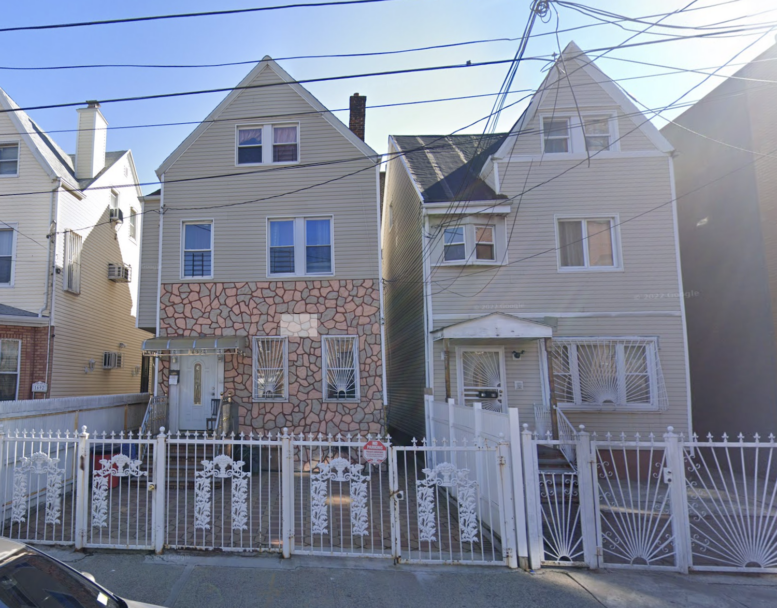Defendants Brought Weapons and Drugs into Juvenile Facility in Brooklyn
Five criminal complaints were unsealed in federal court in Brooklyn charging current New York City Administration for Children’s Services (ACS) employees Da’Vante Bolton, Roger Francis, Christopher Craig and Nigel King, and former ACS employee Octavia Napier, with conspiracy to commit Travel Act bribery. All five defendants were Youth Development Specialists at the Crossroads Juvenile Center in Brownsville, Brooklyn (Crossroads). All five were arrested this morning, and their initial appearances are scheduled for this afternoon before United States Magistrate Judge Joseph A. Marutollo.
Breon Peace, United States Attorney for the Eastern District of New York, Jocelyn E. Strauber, Commissioner, New York City Department of Investigation (DOI) and James Smith, Assistant Director-in-Charge, New York Field Office (FBI), announced the charges.
“As alleged, these so-called ‘Youth Development Specialists’ violated their duty to the City and the residents at Crossroads by smuggling in weapons, drugs, and other contraband in exchange for bribes, placing young people and other staff members at an alarming risk of serious harm,” stated United States Attorney Breon Peace. “These arrests demonstrate that this Office remains committed to rooting out corruption and cleaning up our city’s jails and juvenile detention facilities.”
DOI Commissioner Strauber said, “As Youth Development Specialists at ACS, these defendants were trusted to ensure the safety and security of residents in the City’s youth detention facilities. They betrayed that trust when, as charged, they accepted cash payments in exchange for smuggling drugs, weapons, and other contraband, into the Crossroads Juvenile Center in Brooklyn, destabilizing the facility and increasing the risk of violence to residents and staff alike. I thank ACS for reporting information to DOI, which prompted, in part, the work that led to this investigation with our law enforcement partners in the United States Attorney’s Office for the Eastern District of New York and the FBI, and the charges we announce today.”
“These five defendants, each Youth Development Specialists at the Crossroads Juvenile Center, are alleged to have repeatedly smuggled dangerous contraband into the facility in exchange for bribes. Youth development specialists are entrusted to help troubled youth get back on the right path, instead these individuals allegedly strayed themselves, placing personal gain above the safety and rehabilitation of the juveniles under their watch. The arrests today highlight the FBI’s continued dedication to eradicating public corruption and holding those responsible accountable in the criminal justice system,” stated FBI Assistant Director-in-Charge James Smith.
Approximately 120 residents, ranging from ages 14 to 20, are detained at Crossroads. Residents at Crossroads are prohibited from possessing narcotics, cellular telephones, cigarettes, weapons, and alcohol, among other items. ACS employees at Crossroads are trained to confiscate any contraband they find and must notify a supervisor if any contraband is discovered. Although staff members are supposed to undergo a security screening whenever they enter the facility, a significant amount of contraband has recently been recovered from Crossroads residents. Between approximately March 2022 and May 2024, at least 75 cell phones and more than 340 scalpels or blades were recovered from the facility, as well as narcotics and tobacco.
The defendants either are or were Youth Development Specialists at Crossroads, which required them to supervise residents. Their responsibilities are similar to those of a correction officer at a jail facility.
As alleged in the complaints, the defendants accepted bribes in exchange for smuggling contraband and violating their duties as staff members.
The Defendants and the Alleged Criminal Conduct
Da’Vante Bolton has been employed by ACS since March 2020. As alleged, Bolton accepted more than $20,000 from Crossroads residents or their associates and smuggled in razor blades and marijuana in exchange for those bribes.
Roger Francis has been employed by ACS since July 2018. As alleged, Francis received more than $17,000 in bribes from Crossroads residents and their associates for smuggling in contraband, including marijuana and phone accessories.
Christopher Craig has been employed by ACS since August 2018. As alleged, Craig received more than $5,000 in bribes to smuggle in contraband, including marijuana and tobacco.
Nigel King has been employed by ACS since October 2021. As alleged, King accepted more than $6,800 in bribes for smuggling in marijuana, prescription pills and alcohol.
Octavia Napier was employed by ACS from June 2022 to May 2023. As alleged, Napier received more than $2,000 in bribes to both smuggle in contraband and allow a Crossroads resident to use her Cash App account to run his contraband distribution business from within Crossroads.
The charges in the complaint are allegations, and the defendants are presumed innocent unless and until proven guilty. If convicted, the defendants face a maximum sentence of five years’ imprisonment.



